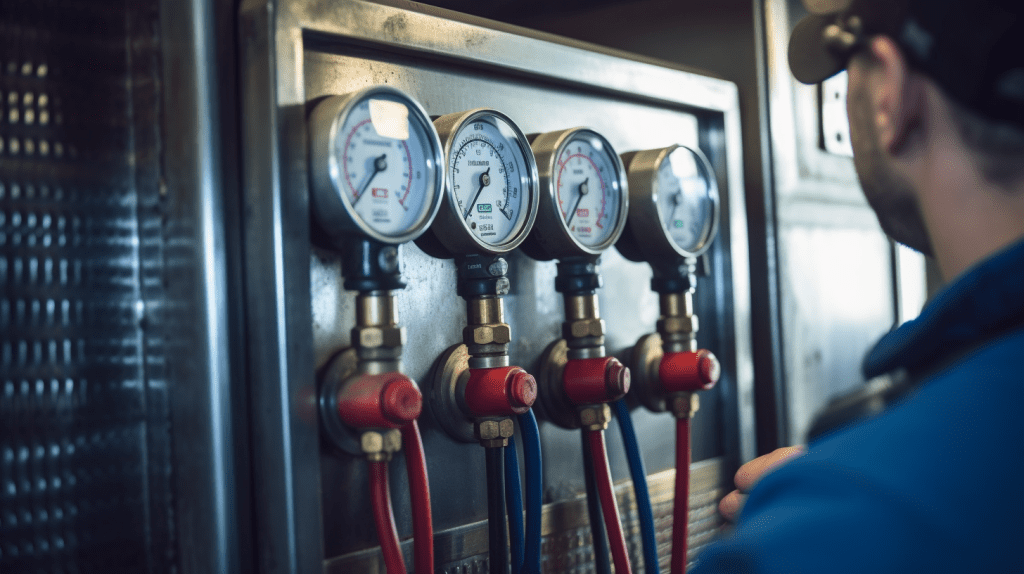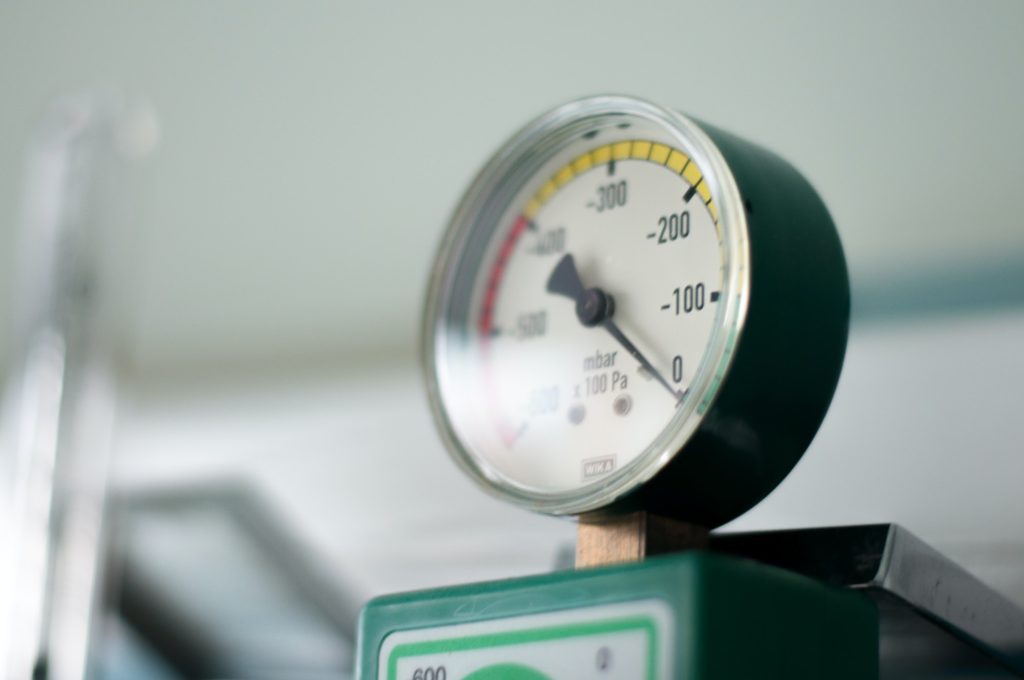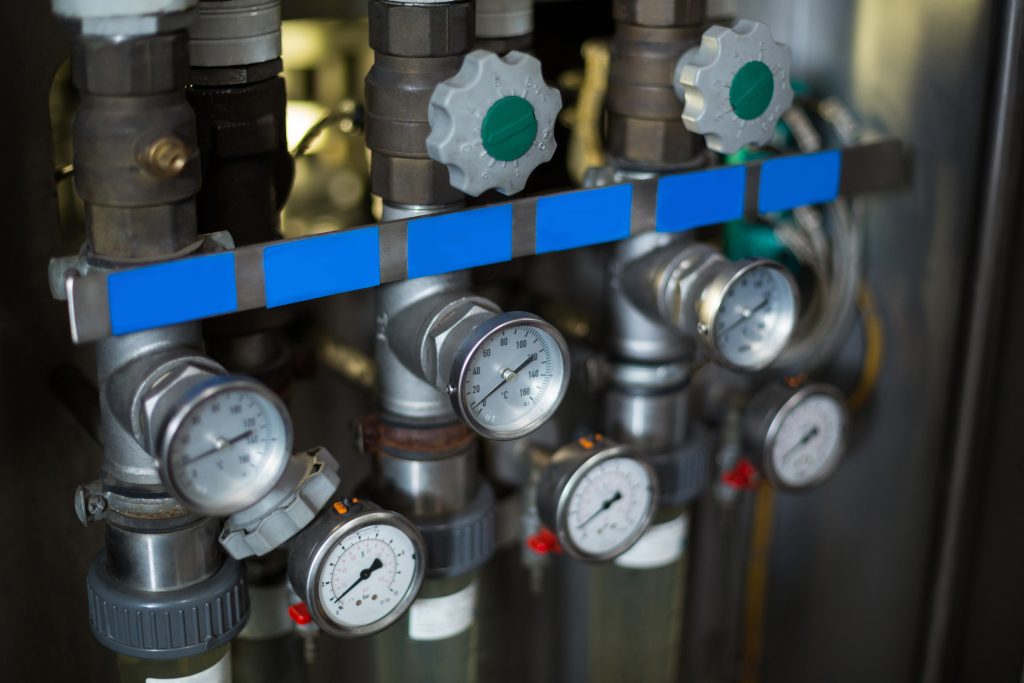Diving into the realm of troubleshooting R134a pressure charts unveils a world where precision meets performance, a critical juncture for any AC system’s efficiency and longevity. This comprehensive guide embarks on a journey to decode the enigmatic signals of refrigeration systems, promising to illuminate the path towards mastery in AC troubleshooting and optimization. With every turn of the page, anticipate uncovering the layers of knowledge that transform routine maintenance into an art form. Join us as we navigate through the intricacies of pressure charts, guided by the expertise of Unity Cooling Systems Inc., and discover how innovations from Carrier and Turbo Air are reshaping our approach to refrigeration system maintenance and efficiency.
What Is the R134a Pressure Chart, and Why Is It Essential?


The R134a pressure chart delineates the relationship between pressure and temperature within an air conditioning system, utilizing R134a refrigerant. This chart is the cornerstone for troubleshooting and optimizing AC systems, ensuring they deliver consistent, cool air without hiccup. But its importance extends beyond mere troubleshooting.
How Can You Use the R134a Pressure Chart to Enhance System Efficiency?


Understanding the R134a pressure chart is pivotal for maintaining the efficiency of your cooling system. This chart aids in identifying discrepancies in pressure and temperature, which can indicate potential issues before they escalate into costly repairs.
What Are the Signs of Optimal Pressure and Temperature Balance?


An optimal balance between pressure and temperature signifies a healthy, efficient refrigeration system. This balance ensures that the refrigerant effectively absorbs and dispels heat, maintaining the desired temperature with minimal energy expenditure.
How to Interpret High and Low Pressure Readings?


Interpreting high and low pressure readings on the R134a pressure chart is crucial for diagnosing and rectifying issues. High pressure may indicate an overcharge of refrigerant or airflow obstructions, while low pressure could suggest a refrigerant leak or a malfunctioning compressor.
The Role of Ambient Temperature in Refrigerant Pressure


Ambient temperature plays a significant role in determining the pressure of the R134a refrigerant. The pressure chart accounts for ambient temperature variations, guiding technicians to adjust pressures accordingly for optimal performance.
Troubleshooting with the R134a Pressure Chart: Where to Begin?


Troubleshooting begins with a comparison of actual system pressures against the ideal values listed on the R134a pressure chart. Deviations can help pinpoint issues such as leaks, blockages, or inefficient compressors.
Expansion Valve and Low Side Pressure: What’s the Connection?


The expansion valve regulates the flow of refrigerant into the evaporator coil, influencing low side pressure. An improperly functioning valve can lead to insufficient cooling, highlighted by abnormal pressure readings.
Can Regular Maintenance Avert Pressure-Related Issues?


Absolutely. Regular maintenance, including checking refrigerant levels and cleaning air filters, can prevent many of the issues indicated by abnormal pressure readings, ensuring your system operates efficiently.
Innovative Solutions from Carrier and Turbo Air


Unity Cooling Systems Inc. proudly partners with industry leaders Carrier and Turbo Air to offer innovative cooling solutions. Their advanced products, designed with precision and reliability, ensure that your refrigeration needs are met with unparalleled efficiency.
The Importance of Professional Guidance in Refrigeration Maintenance


While the R134a pressure chart is a powerful tool, the complexity of refrigeration systems often requires the expertise of professionals. Unity Cooling Systems Inc. provides expert guidance and solutions, ensuring your system’s longevity and performance.
Key Takeaways for Optimal Cooling System Operation:


- The R134a pressure chart is crucial for diagnosing and optimizing refrigeration systems.
- A balance between pressure and temperature indicates a healthy, efficient system.
- High or low pressure readings can signal potential issues, necessitating further investigation.
- Regular maintenance can prevent many common issues, ensuring efficient operation.
- Unity Cooling Systems Inc. offers advanced cooling solutions from Carrier and Turbo Air, ensuring your refrigeration needs are met with the highest standards of efficiency and reliability.
Understanding and utilizing the R134a pressure chart is more than a technical necessity; it’s a strategic advantage in maintaining the health and efficiency of your cooling systems. With the expertise of Unity Cooling Systems Inc. and the advanced products from Carrier and Turbo Air, you’re equipped to navigate the complexities of refrigeration with confidence, ensuring your systems operate at their best, season after season.
FAQ:


How does a gauge work in the context of R134a Pressure Charts?
The gauge in R134a Pressure Charts is used to measure the pressure levels present in the AC system. It helps in identifying any abnormality by revealing whether the pressure is too high or too low, which can further indicate the need for a recharge or repair of the system.
What is the function of the table in an R134a Pressure Chart?
The table on an R134a Pressure Chart provides the relationship between temperature and pressure for R134a refrigerant. It helps in determining the correct pressure levels for specific temperatures, allowing users to spot any discrepancies that may indicate a problem with the AC system.
Are there any potential issues with moisture in the AC system?
Yes, moisture in an AC system can cause significant issues. Moisture may cause condensation inside the system, can corrode metallic components, and may also mix with the refrigerant charge, affecting its effectiveness. It can be addressed using a receiver-dryer that absorbs the moisture.
Why is my AC gauge giving a reading that does not correlate with the table provided by Unity Cooling Systems Inc?
If your AC gauge reading doesn’t correlate with the table, it could be a sign of a problem with the AC system. Some of the reasons may include a low refrigerant charge, a condensation issue, or a faulty gauge. It’s also possible that the ambient temperature is different from usual, which can affect the readings.
How do I recharge my AC system with a new refrigerant?
Before attempting to recharge your AC system, ensure you understand the manufacturer’s instructions and all safety protocols. You will need a refrigerant, typically R-134a, and a compatible AC gauge. Locate your car’s low-side service port, attach the gauge, and release the refrigerant charge until reaching the desired pressure. Please note, overcharging can damage the system, and it’s always best to consult a professional if you’re unsure.
Is the receiver-dryer replaceable part of the AC system?
Yes, a receiver-dryer is a replaceable part of an AC system. It is responsible for removing moisture and contaminants from the refrigerant. Over time, the desiccant inside the receiver-dryer can deteriorate or become saturated with moisture, reducing its effectiveness. At this point, it would require replacement.
What information does the product specification provide me with regarding the R134a Pressure Charts?
The product specification provides vital details about the R134a Pressure Charts. It outlines how it should be used, what the readings on the table represent, and what factors may affect the pressure levels. It also gives specific information about safety requirements when handling this type of equipment.
How does condensation in an AC system occur and what problems can it cause?
Condensation in an AC system occurs when the temperature inside the system drops below the dew point. This can commonly occur if the system is not adequately insulated. Problems caused by condensation include corrosion, degradation of components, and potential refrigerant leakage. It can also affect the efficiency of the AC system.
When should I first use the R134a Pressure Charts for my AC system?
The R134a Pressure Charts should be used during the installation of the AC system and regularly thereafter for maintenance checks. Regular usage of the pressure chart is essential to maintaining the efficiency of the AC and spotting issues like refrigerant leakage or condensation before they evolve into major problems.
Why does an AC system require regular checks with the R134a Pressure Charts?
Regular checks with the R134a Pressure Charts are necessary to maintain the performance and longevity of the AC system. These checks help diagnose issues such as leaks, high or low refrigerant charge, and the presence of moisture, which can cause significant damage if left unattended.
Connect With Us Now! 🌟


Got questions or need expert advice on optimizing your AC system’s efficiency? Don’t hesitate to contact us or give us a call at +1 (281) 818-5959. We’re here to help you navigate through your AC challenges with ease!
Want more insights and updates? Follow us on LinkedIn and explore our video library on YouTube for the latest tips and tricks in refrigeration technology. Let’s make your AC system the best it can be, together!






